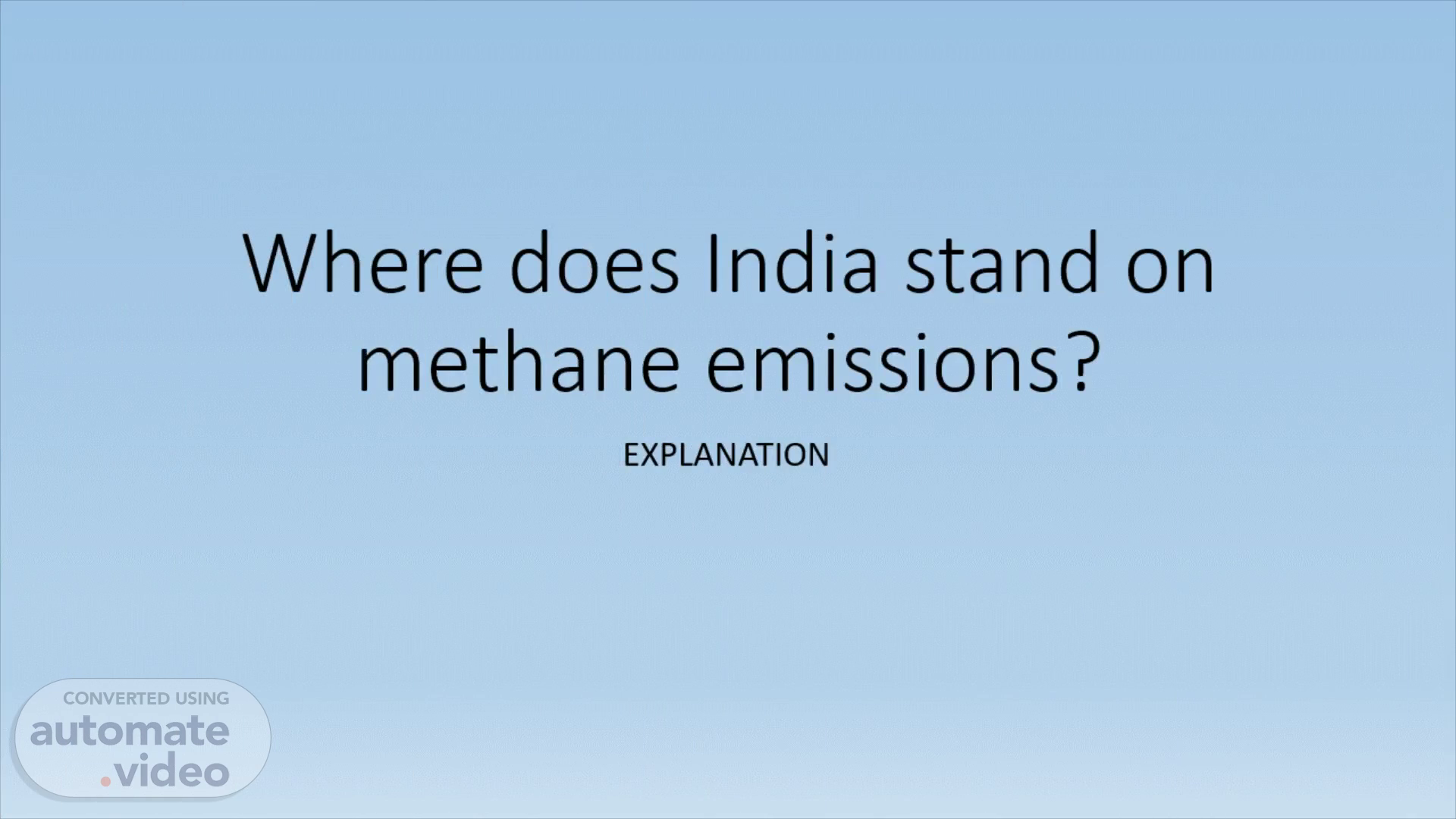
Where does India stand on methane emissions?
Scene 1 (0s)
Where does India stand on methane emissions?. EXPLANATION.
Scene 2 (8s)
INDIA stayed away from both the methane pledge and the forest conservation declaration at Glasgow,the reason is.
Scene 3 (41s)
Is methane potent as a greenhouse gas?. ethane accounts for about a ffth of global greenhouse gas (GHG) emissions and is about 25 times as potent as carbon dioxide in trapping heat in the atmosphere. In the last two centuries, methane concentrations in the atmosphere have more than doubled, mainly due to human-related activities. Because methane is short-lived, compared with carbon dioxide, but at the same time potent, the logic is that removing it would have a signifcant positive impact. Methane is emitted from a variety of anthropogenic (human- infuenced ) and natural sources. The human sources include landflls , oil and natural gas systems, agricultural activities as well as livestock rearing, coal mining, stationary and mobile combustion, wastewater treatment, and certain industrial processes. Sources of methane can be harnessed for energy and in principle reduce dependence on energy sources that emit high carbon dioxide but the lack of incentives and efcient energy markets to realise this is an impediment to curtailing methane emissions..
Scene 4 (1m 23s)
Why hasn’t India signed the pledge?. ■ India is the third largest emitter of methane, primarily because of the size of its rural economy and by virtue of having the largest cattle population. India has stated earlier that it plans to deploy technology and capture methane that can be used as a source of energy. In a communication to the United Nations Framework Convention on Climate Change, India said approximately 20% of its anthropogenic methane emissions come from agriculture (manure management), coal mines, municipal solid waste, and natural gas and oil systems. To tap into this “potential,” the Ministry of New and Renewable Energy (MNRE) claims to have invested heavily in a national strategy to increase biogas production and reduce methane emissions. “The biogas strategy includes many policy initiatives, capacity-building, and public-private partnerships. In addition to promoting biogas development, the strategy supports goals for sustainable development, sanitation improvements, and increased generation of renewable energy,” the MNRE notes.
Scene 5 (2m 7s)
What does the Glasgow Declaration on forest and land use entail?.
Scene 6 (2m 52s)
Why hasn’t India signed up?. ■ There is again no ofcial reason accorded but reports suggest that Indian ofcials are unhappy with the wording that suggests meeting the obligations under the pledge could also mean restrictions in international trade. That is unacceptable, they say, as trade falls under the ambit of the World Trade Organization, of which India is a member. India is also mulling changes to its forest conservation laws that seek to encourage commercial tree plantation as well as infrastructure development in forestland. India’s long-term target is to have a third of its area under forest and tree cover, but it is so far 22%. It also proposes to create a carbon sink, via forests and plantations, to absorb 2.5-3 billion tonnes of carbon dioxide..